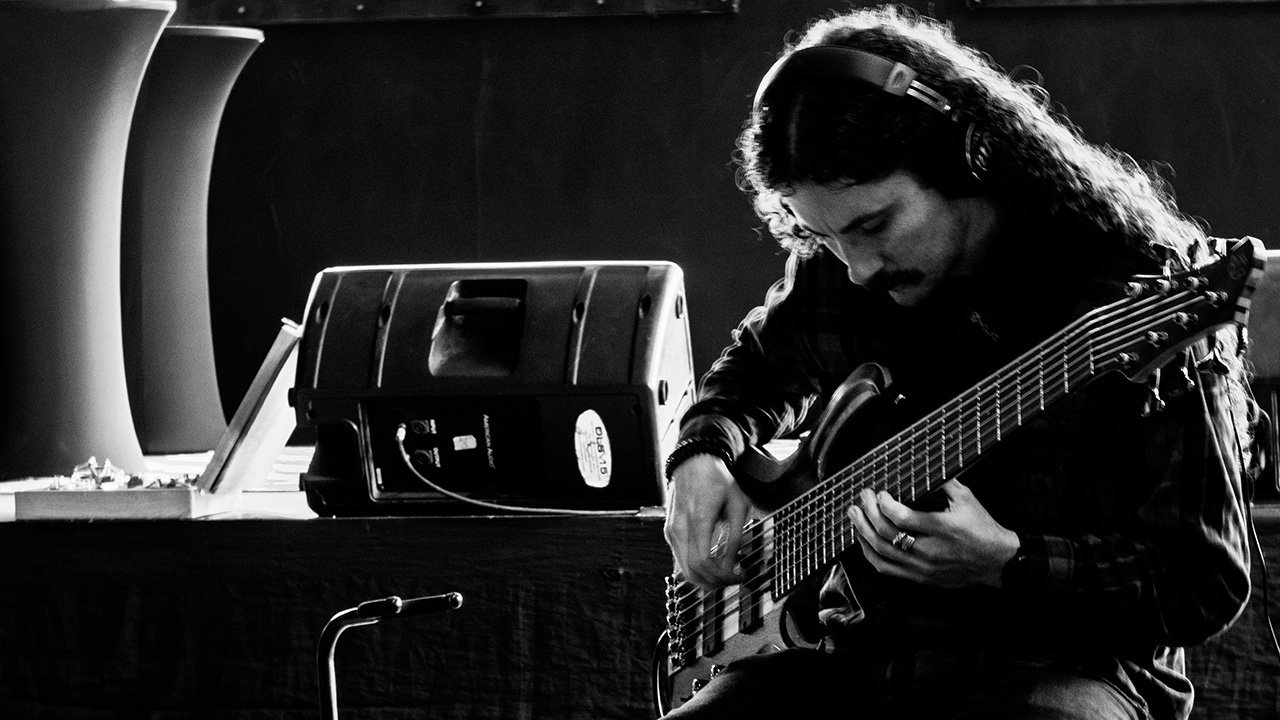Bent Out of Shape: Learning Mozart's Symphony No. 25 in G Minor, Part 3

Welcome to Part 3 of my series teaching you Mozart's 25th Symphony in G minor. For parts 1 and 2, see RELATED CONTENT to the left, directly under my photo.
We're starting to get pretty far into the piece. After this new section, you'll have about one and a half minutes of material when performed at the correct tempo of 160 bpm.
This new section is great for beginners since there's nothing too challenging, technique-wise. The majority of this section is straight quarter notes, which, even at 160 bpm, is easy. The only challenge is memorizing all of the arpeggio shapes, which also is a great exercise, particularly for beginners.
Due to the simplicity of this section, I've decided to play this entirely using a "volume swell" technique, which is totally optional but a lot of fun! I've seen many guitarists using this technique, such as Yngwie Malmsteen, Jeff Beck and Gary Moore. It almost mimics the sound of a violin if done correctly.
I've made a video demonstrating this technique, but the basic idea is that you use your volume control to hide the sound of the pick attack when playing single notes. You pick the note with your volume rolled fully down and then roll the volume up right after so you just hear the sustain of the note. I play every note in this section with this technique except the pull-offs in bars 3, 4, 7 and 8.
You can really only do this technique on guitars where the volume control is close to the strings, such as a Stratocaster. For guitars like Les Pauls, it's difficult to execute as the volume control is too far to reach with your picking hand.
This section focuses on the relative major key of G minor, which is Bb major. It begins with playing Bb notes octaves apart each sustained for an entire bar. Following this, you have a pull-off, which should be played with your pinky, second to first finger. This entire phrase is repeated and followed by arpeggios outlining a simple chord progression (Bb Maj - Eb Maj - A Dim - D Maj - G Min - C Maj).
All the latest guitar news, interviews, lessons, reviews, deals and more, direct to your inbox!
Memorize each arpeggio shape and then play the entire progression slowly to a metronome. If you are using the volume swell technique, make sure your swells are in time with the click and each note is clear and articulate. The section ends with the following descending progression: F 7 - Bb Maj - Bb Min - Bb Dim, followed by a chromatic/octave phrase at the end.
So far, this is my favorite section of the piece. I think it is great for beginners who are new to learning classical pieces and are unfamiliar with playing arpeggios outside of the open position. Once you've learned this section, try performing parts 1, 2 and 3 and see if you can do so at the correct tempo without making mistakes. That's a pretty good challenge, even for advanced payers.
I'm going to take a break from this series for a couple of weeks, but don't worry — I will come back and continue during the second half of December. Next week I will show you a "quick lick" for hard rock and metal players; the following week I will be doing a writeup for an event I'm performing at with one of my biggest guitar influences, Jake E. Lee!

Will Wallner is a guitarist from England who now lives in Los Angeles. He recently signed a solo deal with Polish record label Metal Mind Productions for the release of his debut album, which features influential musicians from hard rock and heavy metal. He also is the lead guitarist for White Wizzard (Earache Records) and toured Japan, the US and Canada in 2012. Follow Will on Facebook and Twitter.
